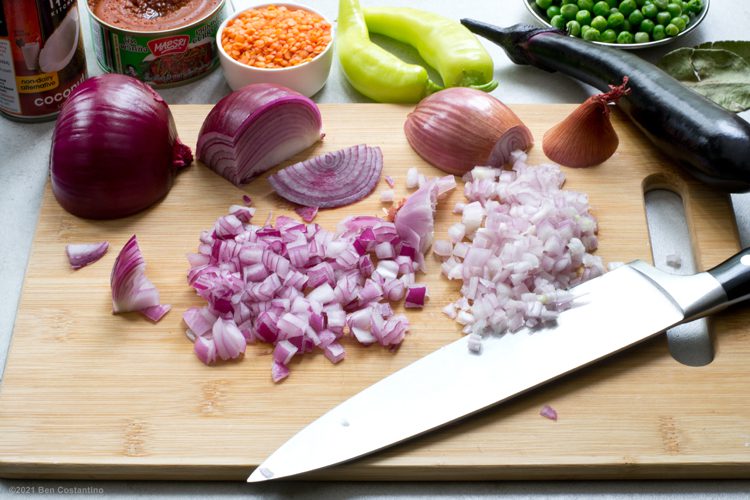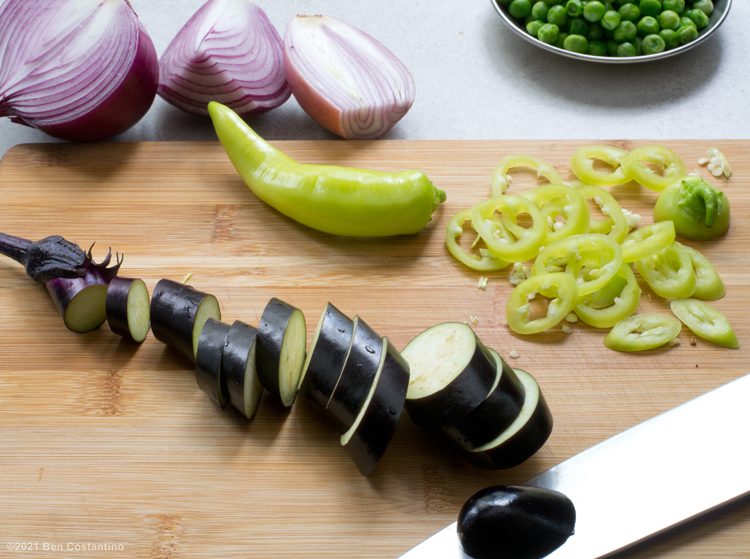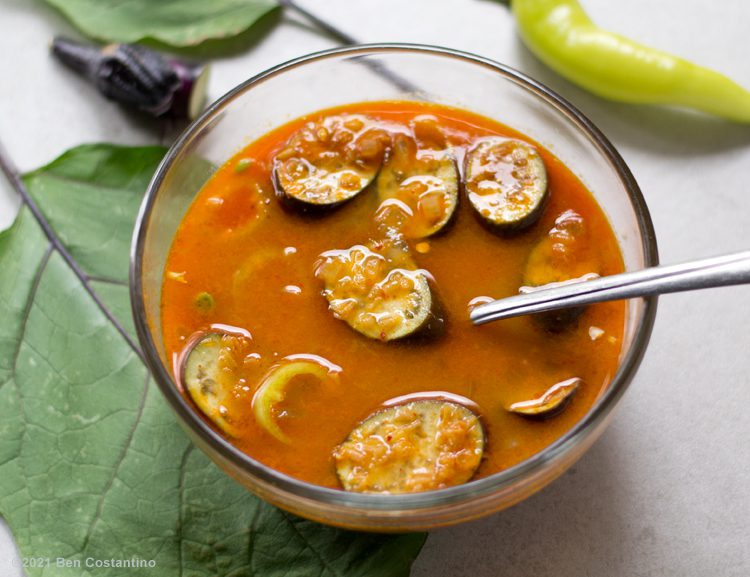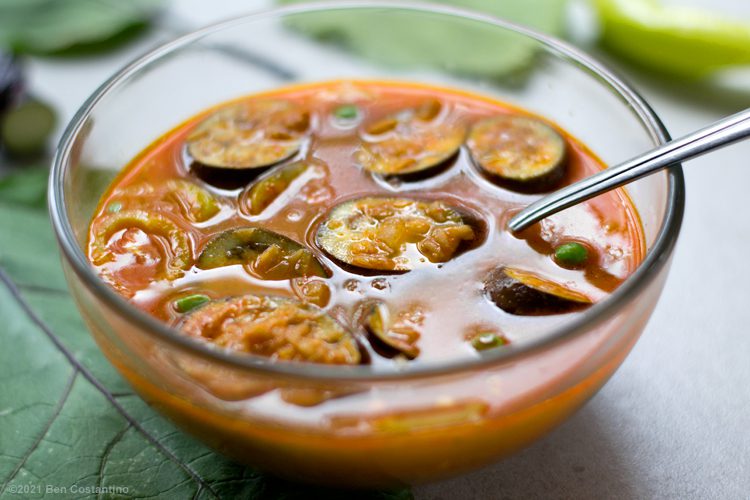

When you really want Thai food but don’t want to spend the money ordering it from a restaurant, using canned curry paste at home is your next-best best option. Even though the paste is not made from scratch, it’s pretty darn good. It will get you really close to replicating any simmered Thai curry dish from a Thai restaurant without the constraints of their menu. Equipped with this spicy flavor base, you have the freedom to choose whatever you want as the star ingredient. And just like curry paste, red lentils are also your friend because they cook super quickly, act as a thickener, and carry curry flavor really well.
For this recipe, all you’re really doing is making a broth in which to simmer the eggplant. To get that fresh curry paste feeling from the canned ingredient, all you need to do is reintroduce some fresh aromatic ingredients that are already in the paste. This time I chose shallots and lime leaves. Because I had a homegrown Japanese “Ichiban” Eggplant, I decided it would be the star ingredient. Meats are a popular choice to simmer in Thai curry, but also consider using other non-meat items such as potatoes, broccoli, cauliflower, or chickpeas.
Aside from offering a serving of plant-based protein, lentils are also effective as a thickener but do keep in mind that a little goes a long way. If you use too many, you will be surprised at how much they can take over your recipe. At first they sink to the bottom of your pot, then they slowly start floating as they cook. That’s when you can finally see how lentil volume much you’re dealing with. If you simply want it to be a “lentil dish”, then increase the amount by all means. What I’m doing here is pretty much the same lentil technique for my Jamaican Curry Lentils in Coconut Milk, with different ingredients.
A tip about coconut milk
When it comes to making coconut milk dishes at home, the main mistake people make (as I certainly did many times) is simply adding too much of it. Yes it’s delicious and satisfyingly creamy, but it can easily become overwhelmingly rich. To fix this, thin it out with water or broth. Coconut milk does not like an aggressive boil, so be sure to keep it at a low boil or simmer. This is why you should add it towards the end, after the lentils are cooked and liquid has reduced a bit.
About Canned Thai Curry Paste
Homemade fresh curry paste is fantastic, but it’s often difficult to find all the ingredients. It can also be quite tedious grinding everything down by hand in a mortar and pestle, as referenced from my go-to Thai cooking resource Hot Thai Kitchen on YouTube. You can find all types of canned Thai curry paste at an Asian market, or and Asian aisle of an International grocery store. You can order them online as well. Many of these curry pastes contain lots of similar base ingredients (garlic, shallots, some kind of chili pepper), then each one differs slightly with a few customized ingredients. For this recipe I chose “Prik Khing” curry paste which uses lemongrass, kaffir lime and galangal to set it apart.
Because you don’t always need to use a whole lot in a recipe, you will likely have curry paste leftover. Instead of letting it go to waste, simply roll it up in saran wrap, and store it in the freezer.
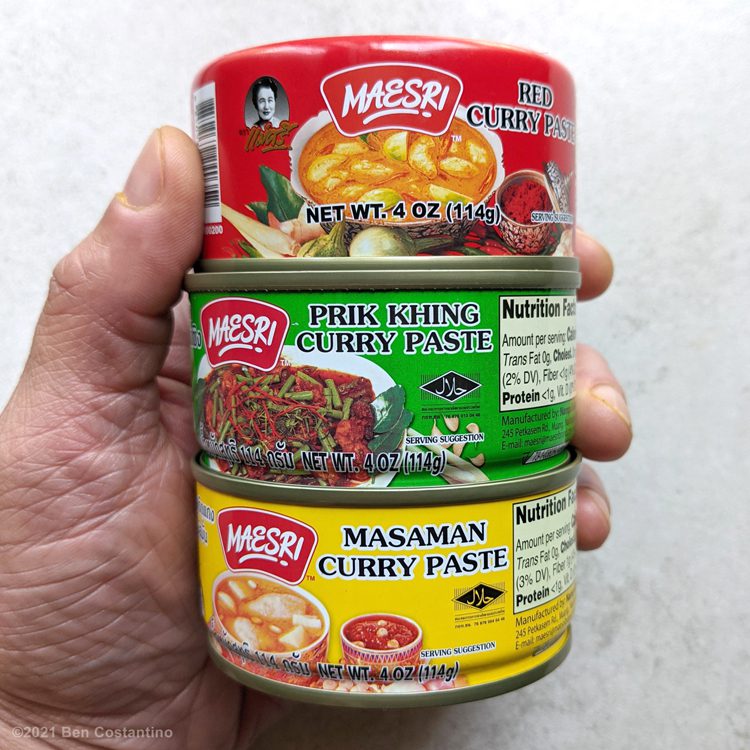
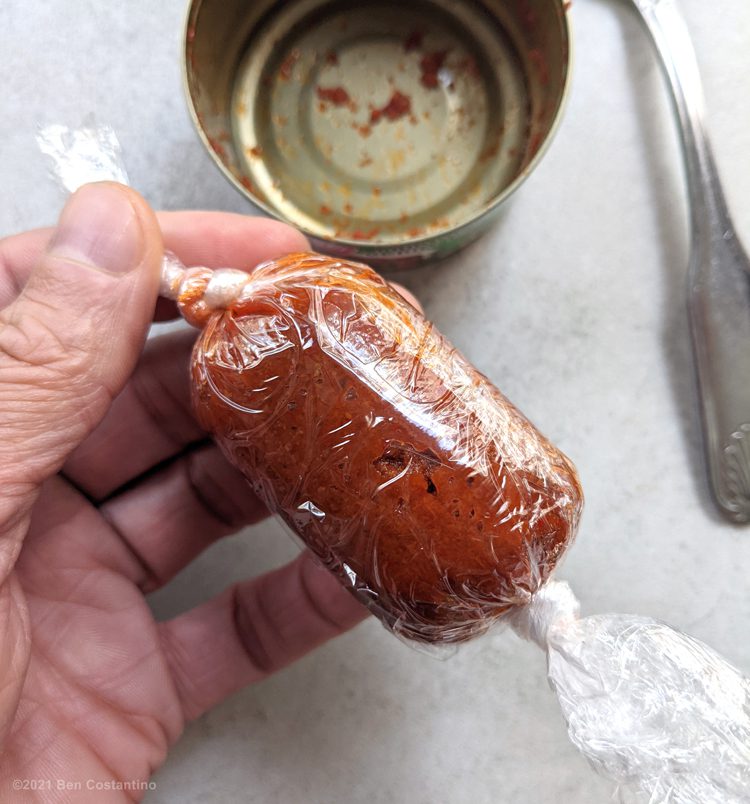
Wrap any unused curry paste in saran wrap to preserve it in the freezer.
 Thai Curry Lentils and Eggplant
Thai Curry Lentils and Eggplant

![]()
Ingredients
- 2 tablespoons canola oil (or coconut oil)
- 1/2 medium-sized shallot
- 1/4 medium red onion
- 2 heaping tablespoons Thai curry paste
- 4 cups water
- 1/3 cup red lentils
- 3 ounces coconut milk
- 1 lime leaf
- 1-2 Japanese eggplants
- other vegetables as desired, such as green peas and sliced banana peppers
![]()
Instructions
- Preheat canola oil over medium heat in a medium pot. Finely dice the onion and shallot. Cook the onion and shallot until translucent and sweating. Then stir in the curry paste so it’s evenly distributed. Cook until fragrant, about 3-5 minutes taking extra precaution not to burn the paste.
- Add the water, increase heat to high, and bring to a boil for a few minutes. Reduce heat then add the lime leaf, lentils, and coconut milk. Simmer this until lentils are fully cooked, about 20 minutes.
- Add the eggplant and simmer until tender. Then add any other veggies towards the end so the don’t overcook.
Yield: 2-3 servings
